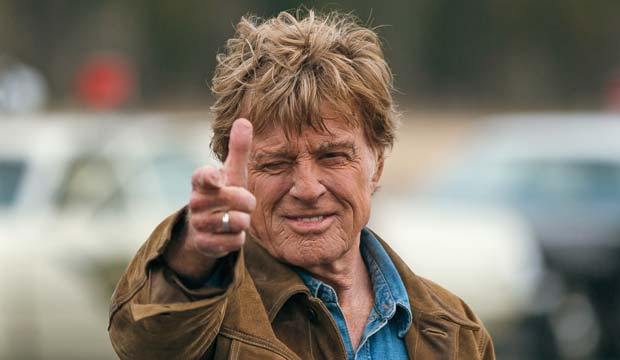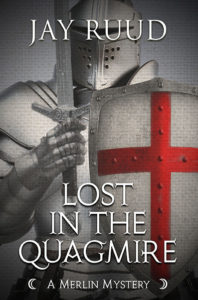The Old Man and the Gun
David Lowery (2018)
[av_image src=’http://jayruud.com/wp-content/uploads/2014/09/SusannTennyson.jpg’ attachment=313′ attachment_size=’square’ align=’left’ animation=’left-to-right’ link=” target=” styling=” caption=’yes’ font_size=” appearance=’on-hover’]
[av_textblock size=” font_color=” color=”]
Imagine for a moment that Butch and Sundance survived that deadly shootout in Bolivia in 1908, and went to prison instead. Then imagine that Sundance escapes from prison 73 years later and ends up in Texas, where he continues to make a living the only way he knows how—robbing banks—now at the age of 114.
Okay, so maybe that’s not quite the plot of director David Lowery’s (A Ghost Story) new Robert Redford vehicle The Old Man and the Gun, but it’s not that far off. Redford, of course, is only 82, so he still has a while to go before he hits his eleventy-fourth birthday. But he is essentially a geriatric Sundance in this film—exceedingly affable, exuding grace under pressure, and charming as ever, this time with 68-year-old Sissy Spacek rather than 29-year-old Katherine Ross. Redford said originally that this film would be his last work in front of the camera (he wasn’t ruling out directing in the future), though he has since hinted that he might be considering reneging on that pledge.
Lowery, who also wrote the screenplay, based his script on a 2003 David Grann article published in The New Yorkerdetailing the career of bank-robber Forrest Tucker, who spent his long life breaking the law and getting tossed in jail, and subsequently breaking out of jail—something he did apparently 16 times over his long career. The real-life Tucker broke out of San Quentin prison at the age of 59 by secretly building a boat, and subsequently went on a crime spree with fellow senior citizens over the next decade. This is the part of Tucker’s career that the film focuses on.
We first see Tucker from behind, standing in front of a bank teller. It doesn’t take us long to realize he is robbing the place. But he’s so polite and courteous to the poor teller that he clearly comes across as a different kind of thief. While making his escape and being chased by police, he sees a pick-up pulled over on the side of the road, and a forlorn woman unable to get her truck moving again. Tucker stops to offer the lady a hand and, as he has his head under the hood with her, the police cars drive on by in pursuit of the quarry that has pretty clearly escaped them.
The woman with the car is Jewel (Spacek), to whom Tucker chivalrously gives a ride and whom he takes out for lunch at the nearest diner. Needless to say, they hit it off. She owns a ranch with a few horses, and could clearly use some help running it and paying the mortgage. He tells her he’s a salesman. When this doesn’t fly, he writes the truth on a slip of paper that he hands to her. By the end of lunch the viewer is pretty sure these two are going to meet again.
Tucker’s next caper is in an Austin bank, which he robs unobtrusively while a local law enforcement officer, John Hunt (Casey Affleck) happens to be standing in line waiting to talk to a teller. His professional dignity somewhat bruised, Hunt makes capturing Tucker a personal fixation. Tucker is now joined by his accomplices Teddy (Danny Glover) and Waller (Tom Waits), and the media dub them the “Over the Hill Gang” (does anybody else hear an echo of “Hole in the Wall Gang” in this?). They go on a rollicking crime spree through the south and southwest, and Tucker’s reputation as a “gentlemanly” robber (who shows his gun, but never fires it) makes him something of a folk hero. When police from a number of towns they have hit get together to compare notes, the event makes the TV news, and Tucker sees Hunt being interviewed, noting his determination to bring these senior citizens to justice. Tucker, who never seems to see his crime spree as anything but a game, leaves a playful taunt for Hunt at his next crime scene.
But that television appearance also brings Hunt a letter from a surprise source, who turns out to be Tucker’s daughter Dorothy (Elizabeth Moss in what is essentially not much more than a cameo), and through her Hunt is able to put together a profile on just who Forrest Tucker is.
More than this would drift into spoiler territory but suffice it to say that there are not a lot of surprises as the film progresses toward its conclusion. Critics have been pretty generous in their assessment of the film, and audiences—who, not surprisingly, have likely been mostly on the older side (there was more gray hair in the Conway theater when my wife and I saw the film than one usually finds outside a 4:30 dinner buffet line)—have looked on the film kindly as well. And it certainly is an incredibly gentle, nonviolent crime-and-pursuit movie, giving us a chance to see national treasures like Redford and Spacek on the big screen again. But for myself, I hope this doesn’t turn out to be Redford’s last film. I’d like to see him chew on something with a little more edge to it (his solo virtuoso performance in 2013’s All Is Lostwould have been a much more memorable swan song). While the adage that it takes a great deal of skill to make a performance seem effortless is no doubt true in many cases, I felt here that Redford was mainly just being charming.
As for Affleck, I’ve seen the kind of astounding work that he can do (for example in the unforgettable Manchester by the Sea), and there were flashes of that in this film, but most of the time I actually couldn’t understand what he was mumbling. And while I always enjoy seeing Danny Glover (who can forget his Lethal Weaponcharacter, or him and that Henry rifle—“Now I don’t want to kill you and you don’t want to be dead”—in Silverado), I have to say that of the very few lines he had in this film, I understood less than half. I know I’m getting old, but my hearing is still fine, and I get tired of contemporary directors and actors who think that mumbling is great acting. If you think that’s more “realistic,” then you need to get more articulate friends. Several critics have noted that this film is shot in the style of Redford’s films from the 1970s, like The Stingand Three Days of the Condor. The film’s style may be reminiscent of those times, but you know what? Nobody in those films mumbled. You could understand the characters, because they realized at the time that the audience actually needed to understand what the characters were saying if they were supposed to follow the plot.
But I digress. Anyway, Glover and Tom Waits are woefully underused, and if it weren’t for a very memorable “Why I Hate Christmas” speech that Waits is given at one point, you would hardly notice they were there. But in spite of all these things, I could be more excited about this movie if it weren’t for one more significant problem: Throughout the film, which presents Tucker’s crime spree as a kind of lark, and presents him as a bank-robber with a heart of gold, the courteous, gentleman thief, the human cost of his life of crime is never really given serious consideration. Even Hunt ends up more or less sympathizing with the guy. But there is one point, the interview with Elizabeth Moss as his abandoned daughter, who makes very clear the effect Tucker’s lifestyle had on her and her mother, when this light touch falls away. The scene, and the change of mood, is clearly deliberate, but one wonders why it is here at all. It serves as a corrective to the lighthearted nature of the rest of the film, but it’s a brief reminder that never raises its head again. The fact that it stands out like this seems a flaw—it’s as if Moss is in an entirely different movie. My impression was that either more should have been made of this, or less. As it is, Dorothy, the daughter Tucker doesn’t seem to even know he has, just comes off as a kind of killjoy.
I’ll give this one two Jacqueline Susanns, and half a Tennyson for what might have been.
NOW AVAILABLE!!!
Jay Ruud’s most recent novel, Lost in the Quagmire: The Quest of the Grail, IS NOW available from the publisher AS OF OCTOBER 15. You can order your copy direct from the publisher (Encircle Press) at http://encirclepub.com/product/lost-in-the-quagmire/You can also order an electronic version from Smashwords at https://www.smashwords.com/books/view/814922
When Sir Galahad arrives in Camelot to fulfill his destiny, the presence of Lancelot’s illegitimate son disturbs Queen Guinevere. But the young knight’s vision of the Holy Grail at Pentecost inspires the entire fellowship of the Round Table to rush off in quest of Christendom’s most holy relic. But as the quest gets under way, Sir Gawain and Sir Ywain are both seriously wounded, and Sir Safer and Sir Ironside are killed by a mysterious White Knight, who claims to impose rules upon the quest. And this is just the beginning. When knight after knight turns up dead or gravely wounded, sometimes at the hands of their fellow knights, Gildas and Merlin begin to suspect some sinister force behind the Grail madness, bent on nothing less than the destruction of Arthur and his table. They begin their own quest: to find the conspirator or conspirators behind the deaths of Arthur’s good knights. Is it the king’s enigmatic sister Morgan la Fay? Could it be Arthur’s own bastard Sir Mordred, hoping to seize the throne for himself? Or is it some darker, older grievance against the king that cries out for vengeance? Before Merlin and Gildas are through, they are destined to lose a number of close comrades, and Gildas finds himself finally forced to prove his worth as a potential knight, facing down an armed and mounted enemy with nothing less than the lives of Merlin and his master Sir Gareth at stake.
Order from Amazon here: https://www.amazon.com/Lost-Quagmire-Quest-Merlin-Mystery/dp/1948338122
Order from Barnes and Noble here: https://www.barnesandnoble.com/w/lost-in-the-quagmire-jay-ruud/1128692499?ean=9781948338127


